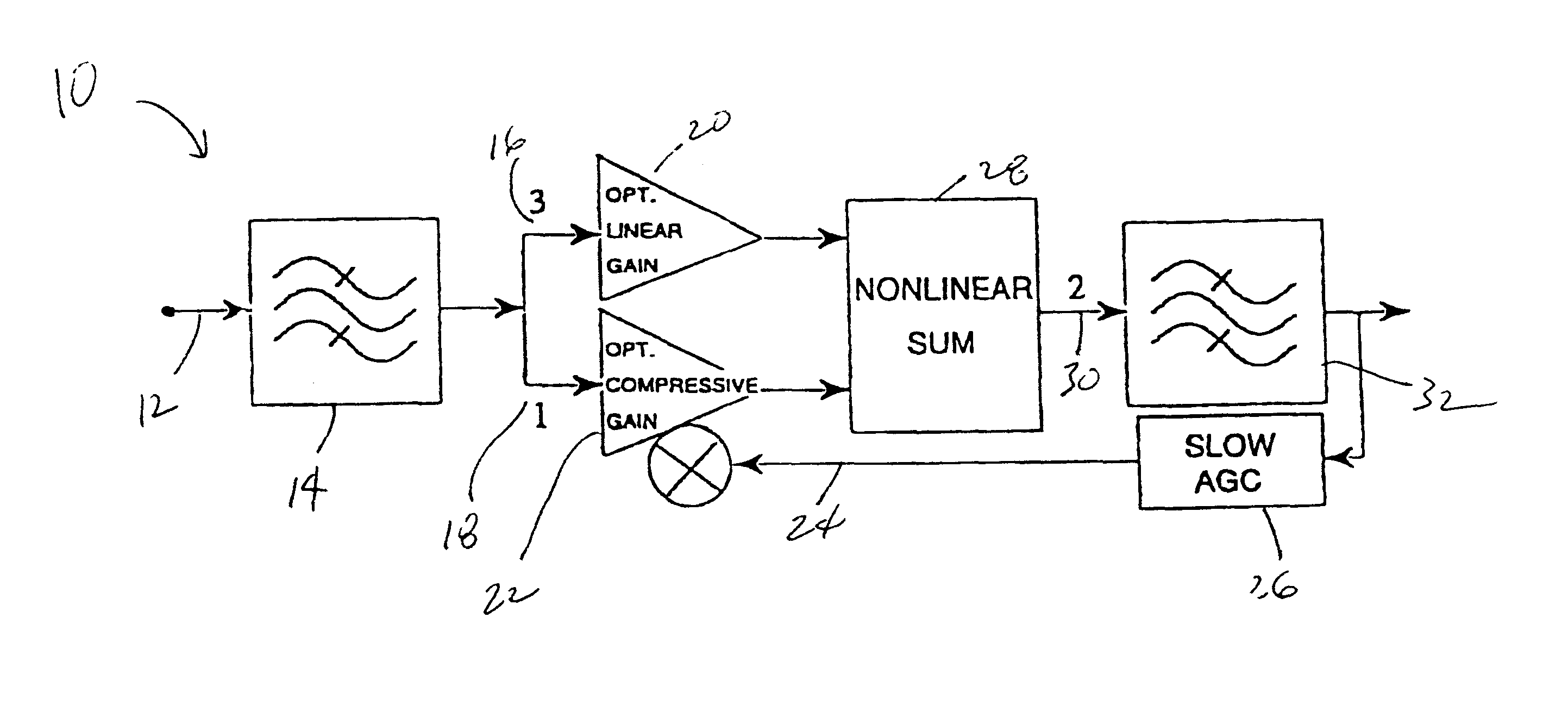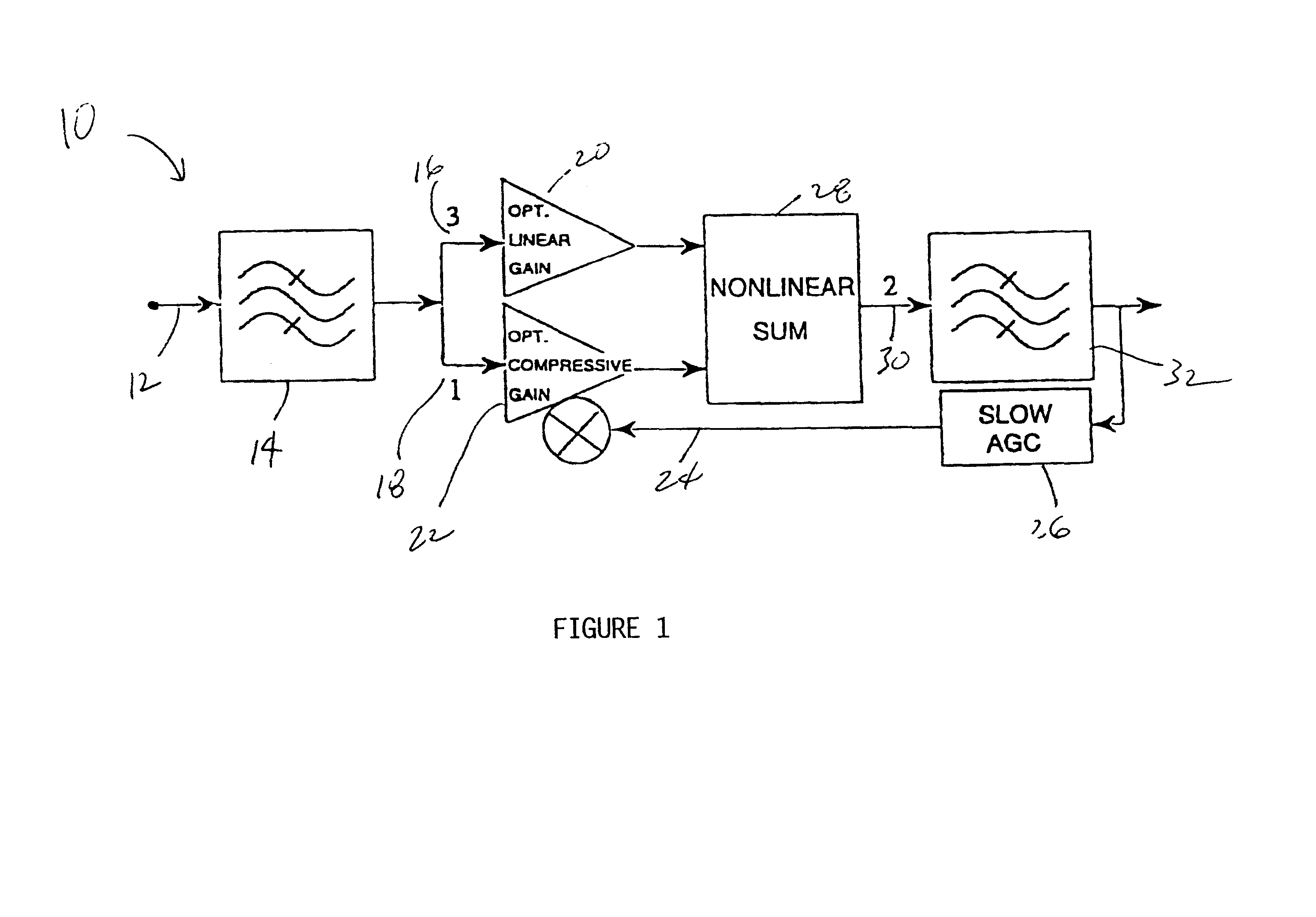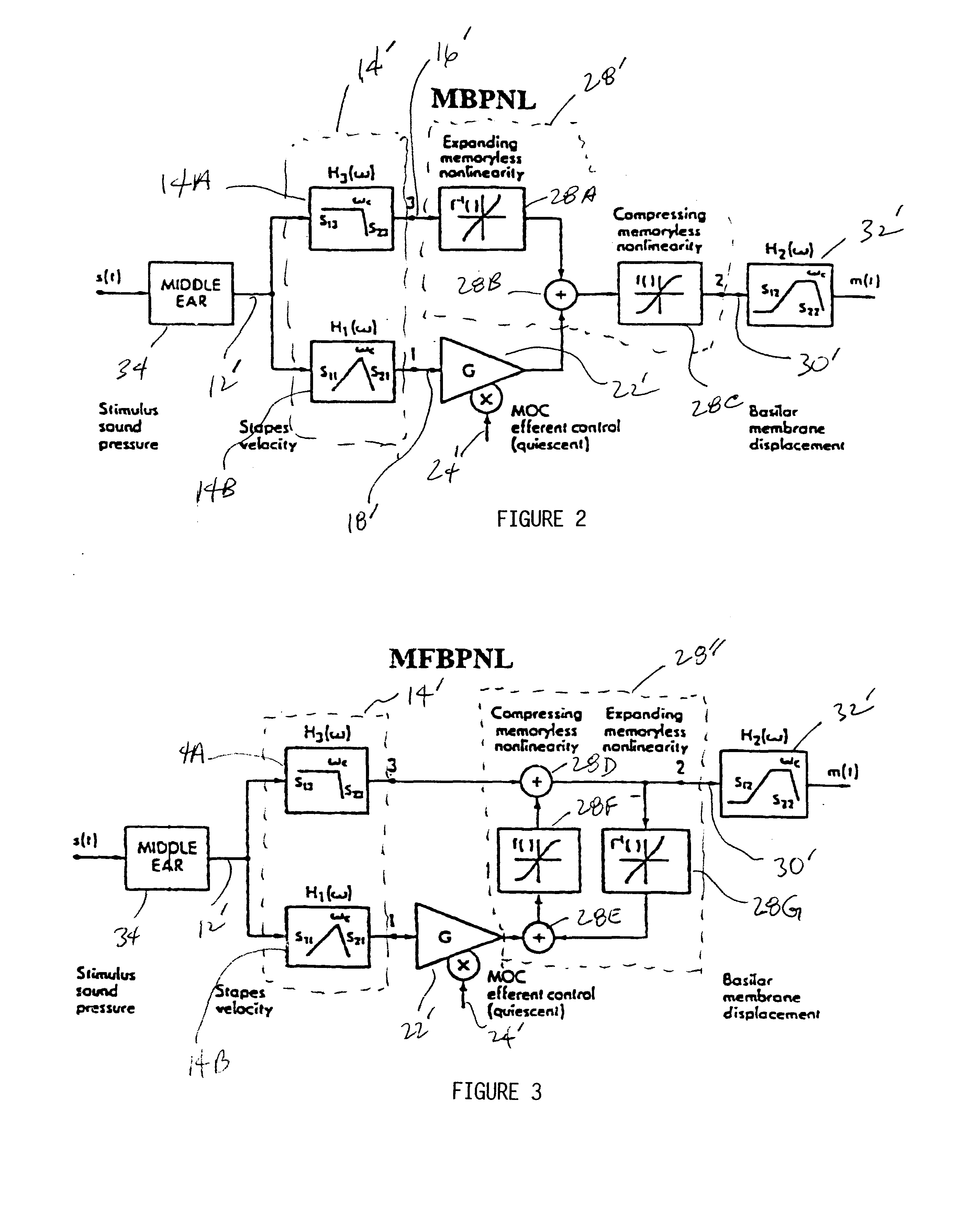Hearing aids based on models of cochlear compression
a cochlear compression and hearing aid technology, applied in the field of electroacoustic system electroamplification amplifiers and electroacoustic filters, can solve the problems of nonlinear distortion of sound waveform, uncertain best engineering approach to compression, loud and uncomfortable noise, etc., to reduce harmonic and intermodulation distortion, avoid annoying amplification of weak sounds, and increase intelligibility
- Summary
- Abstract
- Description
- Claims
- Application Information
AI Technical Summary
Benefits of technology
Problems solved by technology
Method used
Image
Examples
Embodiment Construction
As used herein, a “hearing amplification device” refers to a hearing aid, a hearing aid fitting device (i.e., a testing device used to select appropriate characteristics of a hearing aid for a hearing impaired individual), or a hearing diagnostic device.
FIG. 1 shows a simplified block diagram of a preferred embodiment of a cochlear-based paradigm for hearing aid amplification in accordance with the invention. One channel 10 is illustrated in FIG. 1, although it is contemplated that a hearing aid or diagnostic device preferably will be provided with a plurality of channels, each acting on different audio frequency ranges. Usually, the ranges will comprise contiguous bands covering the useful audio range, but this may depend upon the gain correction required. It should be understood that, although a hearing aid or diagnostic device could be implemented by a literal implementation of the blocks shown in FIG. 1, such an implementation would not necessarily be optimal from a circuit desi...
PUM
 Login to View More
Login to View More Abstract
Description
Claims
Application Information
 Login to View More
Login to View More - R&D
- Intellectual Property
- Life Sciences
- Materials
- Tech Scout
- Unparalleled Data Quality
- Higher Quality Content
- 60% Fewer Hallucinations
Browse by: Latest US Patents, China's latest patents, Technical Efficacy Thesaurus, Application Domain, Technology Topic, Popular Technical Reports.
© 2025 PatSnap. All rights reserved.Legal|Privacy policy|Modern Slavery Act Transparency Statement|Sitemap|About US| Contact US: help@patsnap.com



